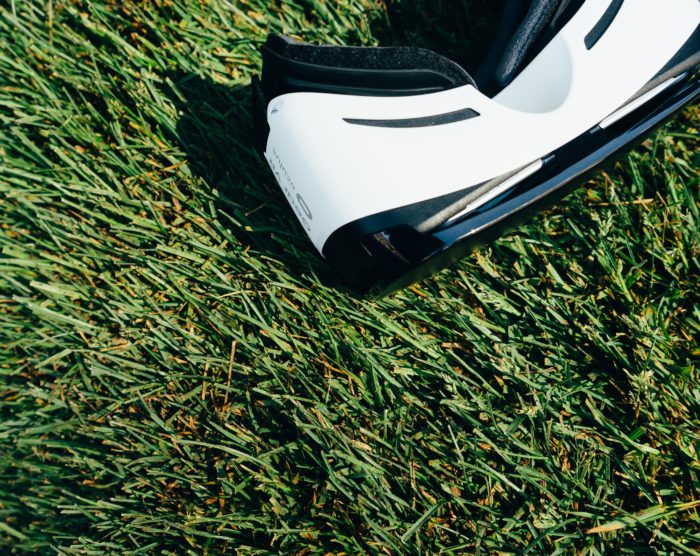What is VR?
Although its name is well-known to everyone, we note that virtual reality is a simulation of reality in a computer environment that it realizes through our senses, such as: seeing, hearing, touching, and even smelling.
Its predecessor is practically considered to be the 3D film. The idea of a movie theater where all of our senses are affected first popped out of Morton Heiiling’s head; he wrote about it in the 50s in the “Experience Theater”. As a result, he built his prototype in 1962 under the name Sensorama, on which 5 short films could be viewed. The exciting thing about this is that it has been kept in working order to this day!

In 1968, Ivan Sutherland made the first VR headset called the “Head-mounted display” (HMD). This was, of course, another primitive device, which, moreover, was so serious that a separate suspension had to be made for it.
Also, a notable step towards virtual reality is the 1978 Aspen movie map, in which we can take a virtual tour of Aspen.
Jaron Lanier, one of the modern pioneers of VR, founded his company called VPL research in 1985, where interfaces such as eyephone or data glove were developed. Even then, the idea of VR was only popular among subcultures like cyberpunk. In the 1990s, however, media attention also began to grow, although many idea theories remained, thanks to finite computing capacities. Therefore, at that time, VR developments were mainly limited to areas such as military, healthcare, or aircraft simulators.
However, in the 90s when the gaming industry had huge growth, in 91 Sega released the Sega VR headset for arcade games, followed in 1995 by Nintendo’s Virtual Boy. And in the same year, Forte developed its VFX1 headset for PC. But the breakthrough awaited.

What has changed?
In 2011, Palmer Freeman Lucky was unhappy with his HMD collection, so at the age of 18, he started developing his own called CR1 in his parent’s garage. 6 generations later, he named it Rift, which he planned to sell to a narrower circle as a “do it yourself” kit instead of series production. Oculus VR was then formed to promote its Kickstarter campaign. And the initial success was also noticed by Facebook, which acquired Oculus in 2014.
And since then, VR has grown exponentially in popularity, with more parties emerging in the market such as HTC, Sony, Samsung, or the lesser-known Virtuix Omni (mainly because they’re at the end).
Thanks to this multis, they are now working on “cutting age” technology on VR equipment. Furthermore, as smartphones have become part of everyday life, a new platform has been born, new media and content producers have also become interested in virtual reality. Last but not least, the era of the internet itself has helped a lot in promoting VR.
Where are we now?
In practice, VR is still in the beginning. Currently, VR technologies are not standardized, so it will definitely be difficult and expensive to buy “VR ready” machines for a long time. In the field of games, demos and indie titles are still the most popular types. True, there are AR games adapted for VR, such as Alien: Isolation, but these are not without flaws, and more serious titles already destined for VR have only just begun to come.

Also, there are several multiplayer online games for VR. These are difficult to produce because the game has to react immediately to your every movement. Some of the most successful VR games are No Man’s Sky, Arizona sunshine, Payday 2, and so on. For those who are interested in more realistic games, like roulette, or a table game there is the Tabletop Simulator which offers a wide range of games including casino games and board games as well that you can play with your friends.
The film industry’s imagination has also started, and experimental films in Hollywood studios have already produced VR content. These are complemented by great support for Facebook and Youtube VR, as well as cheap VR headsets for smartphones. Moreover, VR has broken into the world of sports broadcasts, with NextVR streaming live the Golden State Warriors-New Orleans Pelicans NBA match in October 2015, which was watched on Gear VR.
Although HMDs have come a long way today, they still have room for improvement. The next step may be the FOVE headset, which can track eye movement in addition to head movement, providing a more natural feel in virtual reality, which also helps prevent seasickness and allows for eye targeting.

The goal of the Gloveone developers was to extend the virtual reality to our other senses. In addition to tracking hand movements and gesture recognition, it is designed to simulate the feeling of touch with vibrations.
Looking to the future, it is also worth mentioning AR (augmented reality) tools. Unlike VR, these do not move us from reality to a virtual environment but add virtual interfaces to our real environment using headsets like Microsoft HoloLens. So their implementation is similar, but their purpose is fundamentally different. In any case, they evolve hand in hand and can interact to transform our daily lives over time.
They may also reshape areas such as education, construction, or therapeutic treatments, but our article is now focused on the entertainment industry.
Will VR be successful?
From a technical point of view, everything is for success. On the one hand, as mentioned above, the graphics implementation of VR has never been so good, and on the other hand, hardware manufacturers are doing their best to expand the range of potential buyers.
